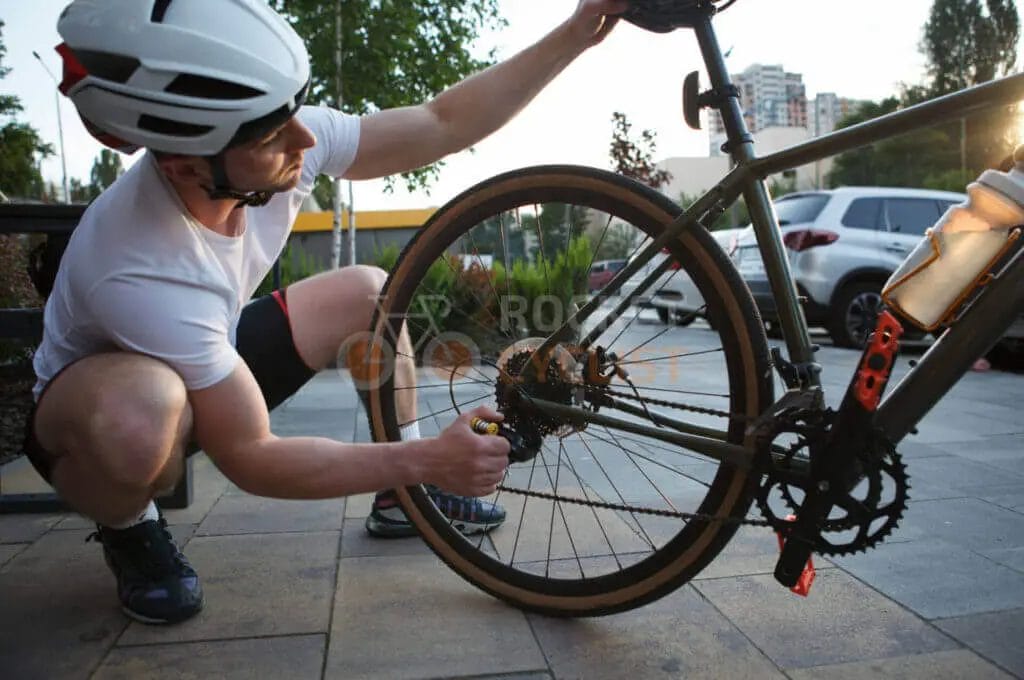Last Updated on March 24, 2024 by Vinson Lozano

Setting the proper torque for your seat post is a critical step in ensuring a safe and secure ride. But what exactly is the torque setting for a seat post? In this informative blog article, we will explore the importance of torque when it comes to your seat post and guide you through the process of finding the correct torque setting for your specific bike.
We’ll discuss the potential consequences of incorrect torque, such as slippage or damage to your seat post or frame, and how it can affect your overall cycling experience. Additionally, we will provide helpful tips and techniques for properly tightening your seat post to achieve optimal performance and avoid any potential mishaps on the road or trail. So, if you’ve ever wondered about the right torque setting for your seat post, keep reading to gain valuable insights and tips to ensure a safe and comfortable ride every time.
Importance of proper torque setting for seat post
The importance of torque, especially for your seat post, is not something to shrug off. Every part of your bike has a recommended torque setting that needs to be adhered to ensure its efficiency and longevity. For the seat post, this is typically between 4 to 7 Newton Meters (Nm). To be more specific, carbon seat posts usually require a lower torque setting, approximately within 5Nm, to prevent damage.
On my Kespor Gravel X-Cross I’ve tightened my seat post clamp by 4 newton meter using my recently bought Bike Hand Professional Torque Wrench.

Impact of incorrect torque on seat post and frame
Ever had a ride where the seat came loose, or worse, where the seat post or frame broke suddenly? Over-tightening can cause serious damages, including cracks and breakage to the seat post or even the frame of the bike, especially if they’re made of delicate materials like carbon fibre. On the other hand, when under-tightened, there’s a risk of your seat post slipping down into the frame during your ride.
Remember, perfecting this balancing act between over-tightening and under-tightening entails understanding the required torque. This helps ensure a safer, smoother ride and longer bike life. So, grab your torque wrench, and let’s do this right!
Understanding Torque
As a dedicated cyclist, you’ll understand how essential the right torque setting is for your bike’s seat post. It’s not only about stability or comfort but also about ensuring you don’t damage your bike’s frame.
What is torque and why is it important?
Torque isn’t just a funny word you’ve heard in mechanics or engineering. It is a measure of the force required to rotate objects – think of it as the strength you need to twist an object around a point or axis. When it comes to your bike, proper torque is crucial. Over tightening can cause cracks and damage, especially in carbon and aluminum frames, while under tightening can lead to slippage or loose components.
Different torque settings for different materials (steel, aluminum, carbon, titanium)
Steel and titanium frames generally have higher torque settings, around 5 to 7 Newton-meters (Nm). This range is a safe bet for most seat posts and saddle rails. Aluminum often requires a lighter touch, with a recommended range of 4 to 6 Nm. Special care should be taken when tightening carbon frames or components to prevent crushing or cracking, generally a lower range of 2 to 3 Nm. Always remember to follow the manufacturer’s guidelines since these values can slightly vary.
Determining the Correct Torque Setting

In your adventurous cycling adventures, one crucial element that requires your attention is the seat post’s torque setting. Ensuring your bike’s seat post is torqued correctly is vital to your overall riding experience and bike’s structural integrity.
Consulting Frame and Seat Post Manufacturer’s Guidelines
Always refer to the manufacturer’s guidelines to determine the correct seat post torque setting. Most manufacturers provide specifications, helping steer clear of over-tightening or under-tightening – both can risk the bike’s performance or potentially cause damage.
Don’t overlook to check the frame’s suggested torque ranges as well. An inadequately secured seat post may slip, while overtightened might induce stress to the frame.
Factors to Consider When Setting Torque
Rider Weight: Remember that your body weight also plays a significant role in determining the precise torque setting.
Riding Style: Aggressive riders may require a tighter seat post to withstand intense navigation. On the contrary, recreational bikers can set a lower torque.
Frame Construction: Lastly, consider the bike’s frame material. Be more cautious with carbon or aluminium frames as they can be more susceptible to damage when over-torqued.
Ensure to use a torque wrench to achieve the recommended torque level, and remember too, regular maintenance checks can go a long way! Ride safe and enjoy your cycling journey.
Torque Setting Process
You’ve probably come across the term ‘torque’ while going about your bike maintenance rituals. To make sure you have a safe ride, specific nuts and bolts on your bicycle, like the seat post, need to be tightened to a recommended torque. Torque is the force that you apply to an object that causes it to rotate, and in the biking world, this is a crucial factor for safety and optimal performance.
Materials needed for torque setting (grease, hex torque wrench, etc.)
Now, the task might seem daunting, but don’t let that stop you. With the right tools – a high-quality hex torque wrench, a bit of grease, and a few other minor items; you can effortlessly perform this operation yourself.
Step-by-step guide to properly setting the torque for seat post
The first step is to ensure that the seatpost is clean and free of any debris. Then, apply a thin layer of grease to it. As for the torque wrench, set it to the manufacturer’s recommended torque – usually printed near the binder bolt or provided in your bike’s manual; it typically ranges between 5-6 NM (Newton Meter).

Begin by loosening the seat clamp using the hex key on your torque wrench. Once loose, you can adjust the height of your seat according to your comfort and preference. After adjusting, tighten the bolt again by applying force slowly and steadily to the torque wrench until you hear a click – that’s your cue that the bolt has reached the correct tightness.
And there you go, a properly secured seat post! This process ensures a safe ride, preventing unwanted cycling mishaps.
Potential Consequences of Incorrect Torque
While setting up your cycle for a spin, it is crucial that all parts are secure and correctly adjusted to ensure a pleasant bike ride. Moreover, it’s of utmost importance that your seat post has the right torque applied. Herein, torque refers to the force with which you tighten the seat post bolt. Failing to use the right torque can lead to unfavorable outcomes.
Over-tightening and potential damage to frame or seat post
If you’re one to believe that ‘tighter is better’, you might reconsider your opinion. Over-tightening the seat post would result in disrespecting the specified torque settings, thereby applying excessive pressure. Such pressure can cause unnecessary strain, leading to the damage of both the bike frame and the seat post. It’s not just about securing the post but doing it right.
Under-tightening and risk of seat post slippage or instability
On the other hand, under-tightening your seat post isn’t a preferable approach either. Too little torque leads to insufficient clamping force which may result in an unstable or slipping seat post. This can be potentially hazardous while riding as it can lead to accidents, particularly at high speeds or tricky terrains.
A balance needs to be achieved. It would be optimal to use a torque wrench for the best results. Technically, most seat posts should be tightened to a torque of 5 to 6 Nm but always refer to your manufacturer’s instructions for a precise setting. Enjoy a safe and comfortable ride!
Importance of Periodic Torque Maintenance
While cycling, you want the utmost confidence in your riding gear, especially your seat post. It is here that torque settings come into play. As a dedicated cyclist, you should prioritize periodic torque maintenance to keep your ride going smoothly and safely.
Why torque setting should be checked and adjusted regularly
Your seat post’s torque setting isn’t something to underestimate. Without proper torque, your seat post could either be too loose, causing destabilization or too tight, leading to potential damage. Besides, both situations increase wear and tear on your seat post. Constantly checking and adjusting the torque to the manufacturer’s recommended settings can help mitigate these potential concerns.
Recommended frequency for torque maintenance
But how often should you perform torque maintenance? The frequency of torque maintenance checks depends on how much you ride. If you’re an avid cyclist, a weekly check might be needed. But for occasional riders, a monthly check could suffice. However, always make sure to check torque settings before embarking on a long or challenging ride, to ensure an optimal cycling experience.
So, remember to give your torque setting the attention it deserves. It’s a small detail with a significant impact on your ride. Always follow the manufacturer’s torque setting, and keep your cycling journeys safe and enjoyable.
Commonly Asked Questions
When it comes to adjusting your bike seat post, proper torque settings are crucial. Over-tightening can lead to crushed frames, while under-tightening can lead to your seat post slipping. Navigating this delicate balance can be tricky, so let’s break down some commonly asked questions!
Can I use the same torque setting for different seat post sizes?
In a nutshell, the answer is no. You can’t use the same torque setting for different sizes of seat posts. Each seat post has a specific torque setting that is dictated by the manufacturer. It’s always a good idea to check the markings on your seat post or consult your owner’s manual to ensure you’re adjusting the torque correctly.
Is there a standard torque setting for all bike frames?
Unfortunately, there isn’t a one-size-fits-all torque setting for bike frames. Each frame (carbon, aluminum, steel, or titanium) has a different density and strength, necessitating different torque settings. It’s recommended to always follow the manufacturer’s instructions to avoid damage.
Can I use a different torque wrench for seat post installation?
Yes, but it’s important to use a torque wrench that can accommodate your seat post’s specified torque. Bike-specific torque wrenches are available with the right range and accuracy for this task. Precision and correct tool usage are key to ensuring your seat post is safely and correctly installed.
Conclusion
Despite being one of the underrated aspects of bike maintenance, understanding the torque setting for your seat post is incredibly vital. A correct torque setting is not just about preventing the seat post from loosening but also about ensuring the right balance between over-tightening and under-tightening.
Summary of the importance of torque setting for seat post
Why is the torque setting critical? Over-tightening can cause severe damage to your bicycle’s components, while under-tightening might make the parts loose, causing safety issues during biking. Specific carbon components can be especially susceptible and could crack under too much pressure, causing costly damage.
Final tips and reminders for proper torque maintenance
Determining the right torque configuration isn’t complicated. Most manufacturers provide the ideal torque settings in newton-meters (Nm) on the bike component itself or in the user manual. Using a torque wrench accurately to adjust the seat post according to manufacturer’s recommendation guarantees optimal bike performance and safety. However, it’s necessary to routinely check the torque settings as part of your bike maintenance just to ensure everything remains within the advised range.
But, remember, while correct application of torque is vital for your bike’s long-term health, it’s equally important to approach it with a gentle hand and a calculated mind.


